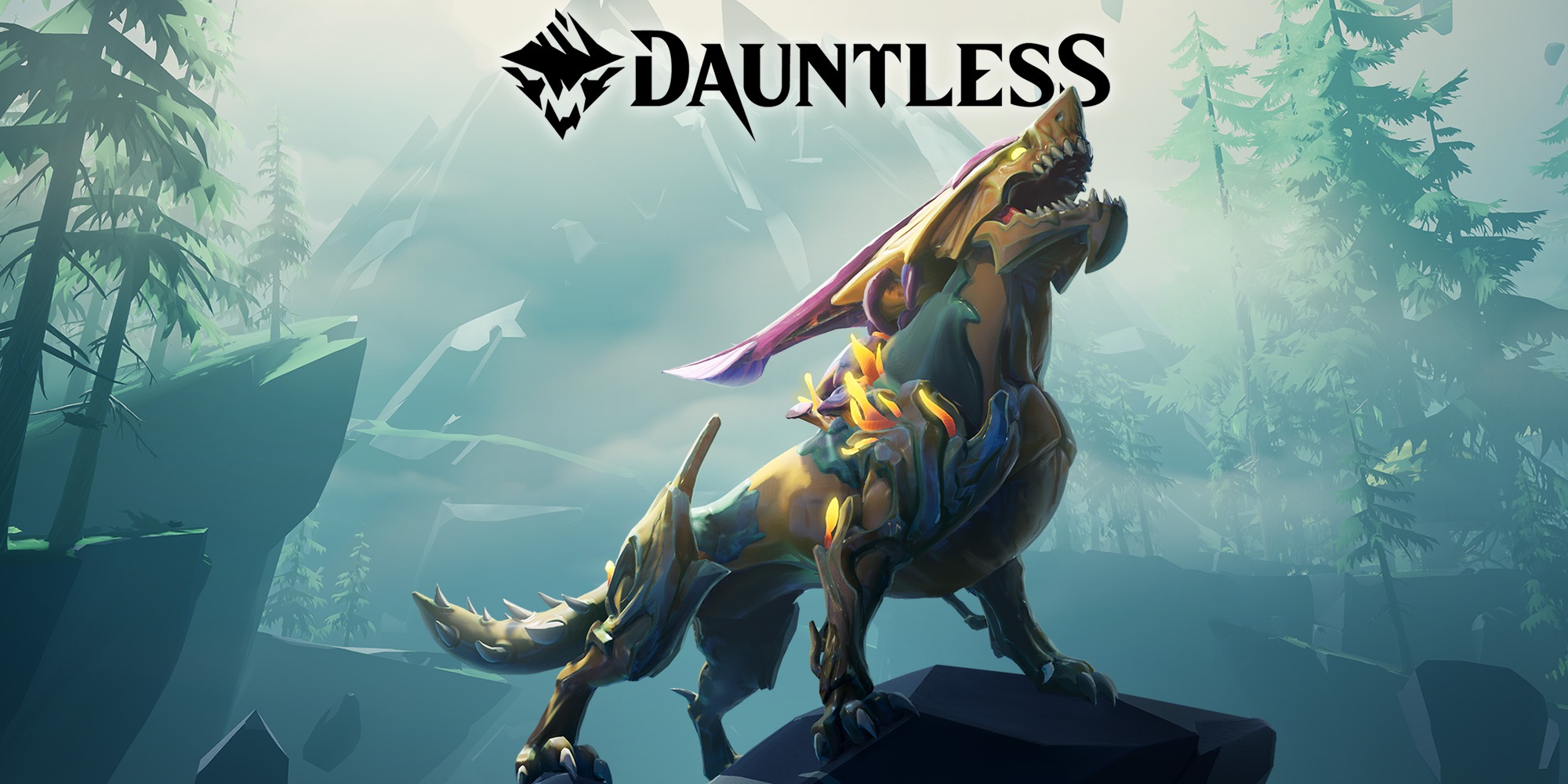Dauntless is an Action-RPG developed by Phoenix Labs. Although you’ve probably never heard of them – Dauntless is their first release – Phoenix Labs is a remarkable team, as their developers have worked, in the past, for such big-name studios as Riot Games, Bioware, and Blizzard Entertainment. Set in a post-apocalyptic fantasy world, Dauntless paints a grim picture: the world itself has been torn apart, killing almost all humans in the process. Those few that remain are being mercilessly hunted down by creatures called Behemoths. But not all is hopeless. Slayers, highly capable and well-equipped individuals, have arisen to combat Behemoths and protect the remains of humanity. The player character will take the role of one such Slayer. Dauntless was designed to be a cooperative experience, and supports up to six players taking on the same challenge. However, it can be played solo as well. Taking inspiration from games such as Monster Hunter and Dark Souls, Dauntless is not an easy game, requiring skill and effort to progress. Dauntless also features many different activities and frequent updates to keep the game feeling fresh. There is a beautiful world to explore, bosses to fight, and, once in a while, a seasonal event occurs. Dauntless is available on MS Windows, Xbox One, PS 4, and Nintendo Switch. You can play Dauntless on Mac as well, even though it is not supported. All you have to do is follow the guide below.
Play Dauntless on Mac with Parallels

Dauntless requires lots of PC resources, but if you have a powerful Mac computer (iMac, iMac Pro, or Mac Pro) Parallels Desktop can be a solution. This is an application that allows for Windows virtualization on Mac with the full support of DirectX and GPUs. In simpler terms, what this means is that it allows you to install Windows 10 on Mac with just a couple of clicks and switch between MacOS and Windows instantly. So you will be able to run Windows, install Steam, and enjoy the Dauntless game on Mac just like on a regular PC.
Note: Recommended devices to run resource-demanding games: MacBook Pro (models with an Intel processor, discrete graphics cards, and 16 GB of RAM or more), iMac (models with Intel processor, discrete graphics cards, and 16 GB of RAM or more), iMac Pro (all models are suitable), Mac Pro (all models are suitable). Parallels on Mac computers with M1 (M1 Pro, M1 Max) chips may not support recent games. Games that require DirectX 12 and later are currently not supported by Parallels. AppsOnMac recommends using Parallels’ free trial feature to determine whether you can run the game or not if you’re uncertain.
Play Dauntless on Mac with cloud gaming services

If you have an old Mac or it cannot satisfy the Dauntless game system requirements, there is an easy solution. Cloud gaming services will be happy to provide you with sufficient computing power – though not for free, of course. All you need is a browser or a small client program and a good internet connection starting from 15 MBit/s. There are several great platforms that provide these services, among the best are Boosteroid, Xbox Cloud Gaming, and Nvidia GeForce Now. As you can see from the screenshot, Boosteroid has Dauntless in its game library, which makes it an obvious first choice.
Play Dauntless on Mac with BootCamp
Note: Mac computers with new Apple Silicon (M1, M2, M3 Pro, or M1, M2, M3 Max) currently do not support BootCamp. In this case, please, use the options above to run Dauntless on Mac
This method is simple but time-consuming. If your Mac meets all the system requirements above, you can play Dauntless on Mac by installing Windows. You need to set up a dual boot of Windows and Mac via BootCamp. This is an application that allows users to choose the system to work in on startup, however, you won’t be able to switch between systems like in Parallels. You will need to reboot your machine every time you want to switch from Mac to Windows and vice versa. Remember that Mac is just a computer, in the end. And while newer Macs have their own special Apple Silicon chips that cannot run Windows, older Macs are very much similar to computers that run Windows, they have Intel processors, compatible RAM, disks, and other components. So you can install Windows on an older Mac by allocating no less than 64 GB of disk space (to be able to run Windows and a couple of games) and following these steps:
For OS X El Capitan 10.11 and older
For MacOS versions prior to OS X El Capitan 10.11 you will need to create a bootable Windows USB.
- Download this Windows ISO file.
- Open Boot Camp Assistant (Go to Applications > Utilities).
- Define the Windows partition size and choose the Windows ISO file you’ve downloaded.
- Format the Windows partition and go through all Windows installation steps.
- When Windows boots for the first time, follow on-screen instructions to install Boot Camp and Windows support software (drivers)






